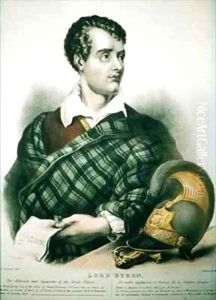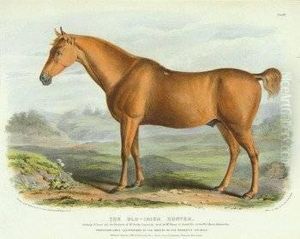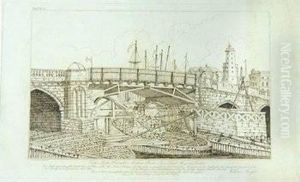Thomas Fairland Paintings
Thomas Fairland was a notable British lithographer and artist, born in 1804. His contributions to the field of lithography during the 19th century were significant, especially during a time when this medium was undergoing rapid development and gaining popularity for its ability to reproduce artworks and illustrations. Fairland's work is characterized by its detailed and delicate execution, showcasing his skill in capturing both the essence and nuances of his subjects.
Fairland's career was marked by his adeptness in both the artistic and technical aspects of lithography, a printing process that involves creating images on a flat surface, typically stone, to be transferred to paper. He was particularly renowned for his ability to render detailed and lifelike portraits, as well as for his illustrations that captured the social and cultural scenes of his time. Among his notable works were lithographs of paintings by other artists, which played a crucial role in making art more accessible to the public and in promoting the works of contemporary painters.
Despite his talent and contributions, Fairland's life was not without challenges. The competitive and rapidly evolving nature of the printing and publishing industry during the 19th century meant that artists like Fairland often faced financial instability and the constant need to innovate and adapt. Nevertheless, he managed to leave a lasting impact on the field of lithography, pushing the boundaries of what could be achieved with the medium.
Thomas Fairland's legacy is that of a skilled lithographer who contributed significantly to the development of the medium in the 19th century. His works remain a testament to the intricate and expressive possibilities of lithography, capturing the essence of a period marked by both cultural richness and technological advancement. Fairland passed away in 1852, but his contributions to the art world continue to be recognized and appreciated by art historians and enthusiasts alike.


